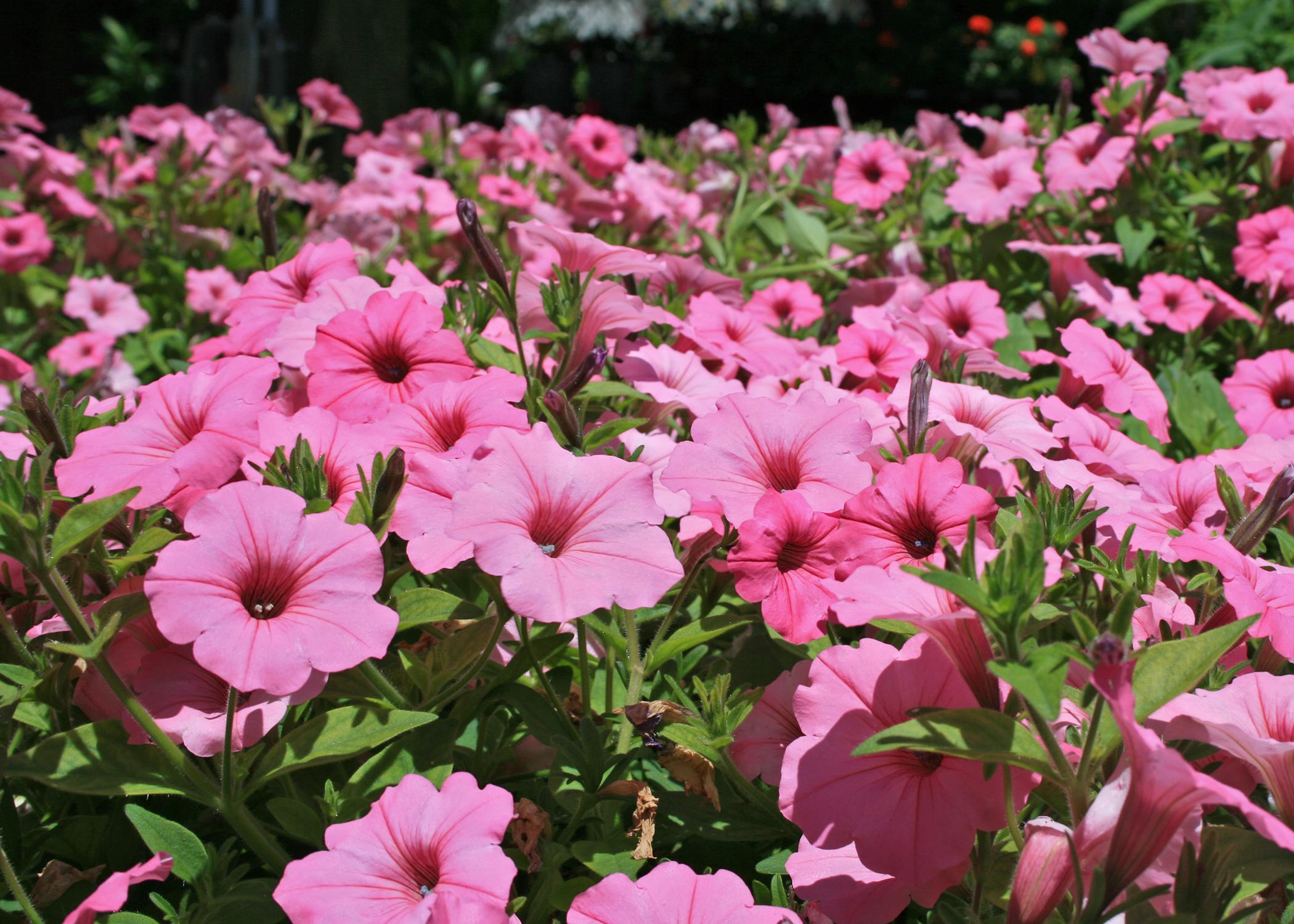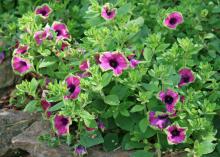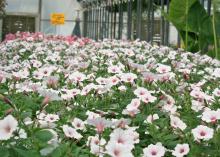Information Possibly Outdated
The information presented on this page was originally released on February 16, 2015. It may not be outdated, but please search our site for more current information. If you plan to quote or reference this information in a publication, please check with the Extension specialist or author before proceeding.
Plan to use Supertunias in summer landscapes
With the cold winter weather upon us, are you thinking about planting annual color for the summer? It’s never too early to plan ahead, and thinking about the beautiful landscape you’ll have in the summer is one way to enjoy the dreary winter months.
One of the reliable summer-color plants I like the most is the petunia, and in my opinion, you can’t go wrong with Supertunias. Their selection of colors allows you to work with any color scheme.
A couple of my favorites are Vista Bubblegum and Pretty Much Picasso. The clear, bright-pink flowers of Vista Bubblegum have performed well in Mississippi gardens. These vigorous plants spread 3 feet and can be up to 24 inches tall. When massed in the landscape bed, it creates a pink groundcover.
Vista Bubblegum is also a good choice for containers and hanging baskets where its flowering branches and shoots can cascade over the edge. The growth of this plant is so reliable that it was chosen as a Mississippi Medallion winner in 2012.
Pretty Much Picasso has also grown well in my garden, but it is its flower color scheme that really impresses me. This plant has unique pink petals with a purplish throat. Flower edges are lime green and tend to blend into the foliage, making it difficult to see where the flower ends and the foliage begins.
A couple of the other color selections can’t be beat either. Vista Silverberry has silvery-white flowers with delicate magenta veins. Raspberry Blast has bicolor pink flowers that are edged in deep cerise violet. It has been a favorite that I planted at the street by my mailbox.
One of characteristics of supertunias that I appreciate very much is their self-cleaning nature. This means you don’t have to deadhead spent blooms to maintain flowering. The only time you need to do any pruning is to keep the plants tidy.
In my landscape experience with Supertunias, when they start to look a little tired, simply cut them back about a third. Feed them with a water-soluble fertilizer to rejuvenate and invigorate the plants.
Supertunias can be grown in-ground or in containers and hanging baskets. In the ground, space them 18 inches apart from the center. This spacing allows most petunias to form a lush, full mat full of flowers. Always plant the transplants at the original cell-pack or pot depth.
Always plant in the full sun for the best flowering and growth. Keep the soil or potting medium consistently moist. If you let the plants dry out, they will start to wilt and shut off flowering for up to a couple of weeks. This is especially important when growing petunias in containers, as these dry our much faster.
Early-morning watering helps keep the soil moist. During the highest temperatures of summer, you may need to water containers and hanging baskets again in the afternoon. This is where having a drip irrigation system is very useful.
Supertunias are heavy feeders, so apply a controlled-release fertilizer at planting. For the best growth and flower production, feed these plants on a regular basis. I like to use a water-soluble fertilizer when I water the plants.
Not only are supertunias great plants for humans, but butterflies and hummingbirds are also attracted to them, giving you two reasons to enjoy them in your landscape and garden each year.










